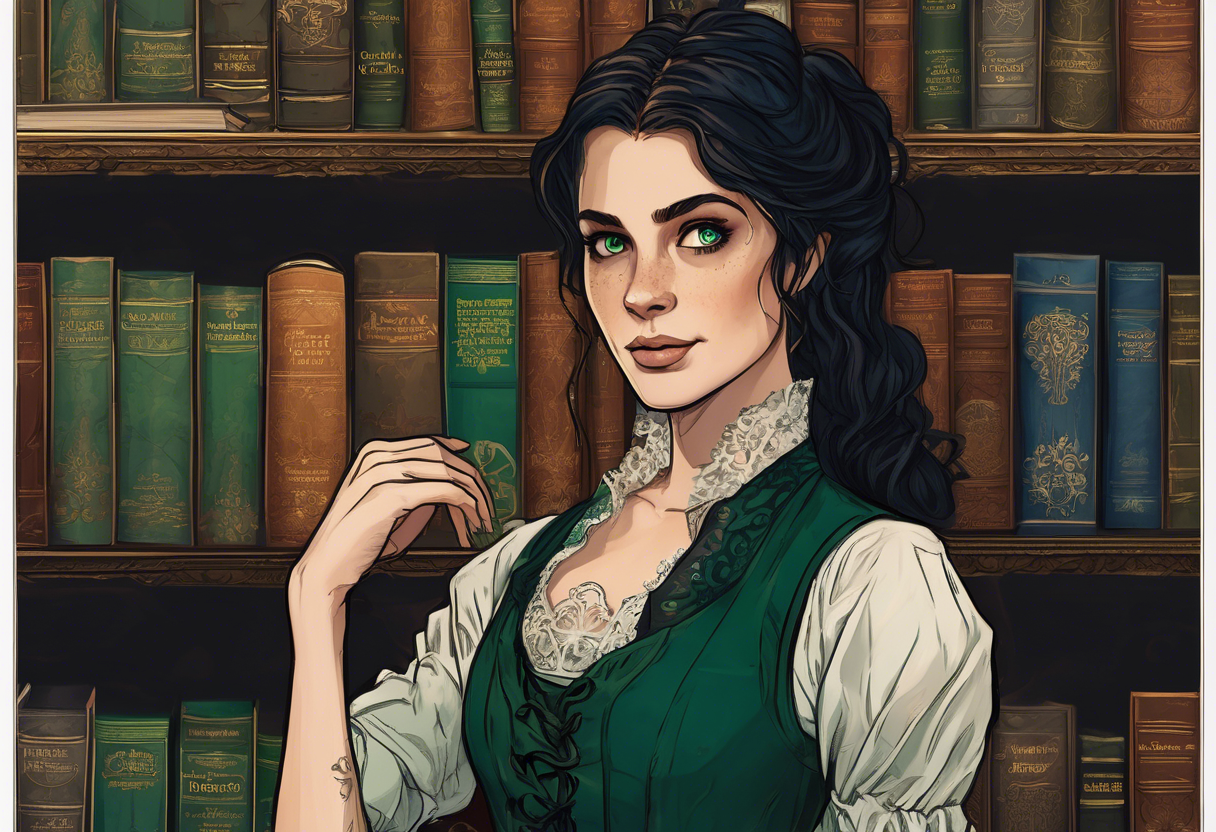Contents
Introduction
Lucie Herondale, the youngest child of William Herondale and Tessa Gray, is a pivotal character in Cassandra Clare’s Shadowhunter Chronicles, specifically within the series known as "The Last Hours." Although she is not a character from "The Mortal Instruments" series directly, her lineage and story are deeply intertwined with the broader Shadowhunter universe.
Born in 1887, Lucie is the sister of James Herondale and the daughter of two iconic characters from "The Infernal Devices" series. Her name is a tribute to Lucie Manette from Charles Dickens’ "A Tale of Two Cities," reflecting her parents’ literary inclinations [1][3].
Lucie’s character is marked by her unique blend of Shadowhunter and warlock traits, inherited from her mother Tessa, who has the ability to transform into other people. This blend of abilities sets Lucie apart and plays a significant role in her journey.
Role in the Story
Lucie’s storyline is central to "The Last Hours" series, which includes books such as "Chain of Gold" and "Chain of Thorns." The series follows Lucie and her brother James as they navigate the complexities of being Shadowhunters in the early 20th century.
Lucie’s journey involves discovering and mastering her warlock powers, which are still somewhat mysterious. She is known to see ghosts, a trait shared by her family members, particularly the Herondales [1][3].
Her relationships with other characters are crucial to the narrative. Lucie is particularly close to her brother James, who affectionately calls her ‘spots’ and ‘Tuppence.’ She also plans to become parabatai with her best friend and penpal, a bond that is deeply significant in the Shadowhunter world [1][5].
Lucie’s marriage to Jesse Blackthorn and his subsequent death have a profound impact on her character, often causing her mind to wander and reflecting her emotional depth.
Character Analysis
Lucie’s personality is described as practical yet dreamy, a balance that makes her both grounded and imaginative. Tessa Gray’s description of Lucie highlights this duality, suggesting a character who is both down-to-earth and open to the possibilities of the world around her [1].
Her motivations are rooted in her desire to protect her loved ones and to understand and control her unique abilities. This drive for self-discovery and protection makes her a compelling and relatable character.
Lucie’s strengths include her resilience and her ability to navigate complex emotional landscapes. Her flaws, such as her tendency to get lost in thought following her husband’s death, add a layer of realism to her character.
Throughout the series, Lucie undergoes significant development as she faces various challenges and learns to harness her powers. This growth makes her an inspiring and empathetic character for readers.
Themes and Symbolism
Lucie embodies several themes that are central to the Shadowhunter Chronicles. One of the most significant themes is the struggle between tradition and innovation. As a Shadowhunter with warlock abilities, Lucie represents a bridge between different worlds, highlighting the importance of adaptability and acceptance.
The theme of family and legacy is also prominent in Lucie’s character. Her connections to her parents and brother, as well as her marriage and subsequent widowhood, underscore the complexities and strengths of familial bonds.
Lucie’s ability to see ghosts symbolizes the connection between the past and the present, a recurring motif in the Shadowhunter series. This ability also reflects her emotional state, often serving as a metaphor for her inner turmoil and her connection to those she has lost [1].
Cultural Impact
Lucie Herondale has made a significant impact on the fan community of the Shadowhunter Chronicles. Her unique character and the mysteries surrounding her powers have generated considerable interest and speculation among readers.
While Lucie has not been directly portrayed in any major adaptations yet, her presence in the books has influenced fan art, fan fiction, and discussions within the fandom. Her character represents a new generation of Shadowhunters, appealing to readers who are eager to see how the next wave of characters will shape the series.
Critical Reception
Critics and readers have been intrigued by Lucie’s introduction into the series. Her character has been praised for adding a fresh perspective to the Shadowhunter world, particularly in terms of her mixed heritage and unique abilities.
Some readers have noted that Lucie’s character is still somewhat enigmatic, with much of her story yet to be fully revealed. However, this mystery has only added to her allure, making her one of the most anticipated characters in the series.
Legacy
Lucie Herondale’s enduring appeal lies in her complex and dynamic character. She represents a new era in the Shadowhunter Chronicles, one that blends the historical context of "The Infernal Devices" with the modern themes of "The Mortal Instruments."
Her relevance in contemporary discussions about identity, family, and power makes her a compelling figure. Lucie’s story has inspired other works within the Shadowhunter universe and has set a precedent for characters who navigate multiple identities and abilities.
As the series continues to unfold, Lucie’s character is likely to remain a central figure, influencing both the narrative and the broader cultural impact of the Shadowhunter Chronicles.
References
- https://aminoapps.com/c/shadowhunters/page/item/lucie-herondale-blackthorn/e1DB_DGI6IbjrGj0dY4Zl1NEjqV3EzaXZP
- https://shadowhunters.fandom.com/wiki/Lucie_Herondale
- https://shadowhunters.fandom.com/f/t/Lucie%20Herondale
- https://www.goodreads.com/characters/97689-lucie-herondale
- https://simonteen.com/2020/02/18/get-to-know-the-characters-from-cassandra-clares-last-hours-series/







